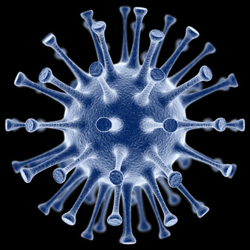A novel molecule in the fight against viruses
The emergence of novel virus infections caused by HIV and severe acute respiratory syndrome (SARS) as well as avian and swine influenza necessitates the understanding of the mechanisms of virus infection and immune responses. In its most extreme form, SARS or influenza virus infections could lead to acute respiratory distress syndrome (ARDS), a fatal outcome of acute lung injury. Seeking to address this, the EU-funded 'Elucidation of the function of DDX3X in innate immunity' (DDX3X FUNCTION) project focused on the role of the RNA helicase molecule DDX3X. Researchers were interested in discovering how DDX3X regulates the expression of type I interferons (IFN-Is), central players of innate immunity. Secretion of IFN-Is follows the stimulation of various pattern recognition receptors (PRRs) that constitute the first line of immune defence. To study the importance of DDX3X, scientists generated mice lacking the molecule and subjected various cell types to PRR stimuli. They were working under the hypothesis that if DDX3X was essential for immune responses, then DDX3X knockout mice would be more susceptible to viral infections. Additionally, as a result they would secrete lower levels of IFN-Is. Consistent with their initial assumptions, DDX3X was found to be implicated in the detection pathway of cytosolic DNA and in the interferon response following infection with vesicular stomatitis virus (VSV). The outcome of the animal infection experiments would determine if these observations could be recapitulated in vivo. Recent reports have unveiled the PRR TLR4 as a susceptibility locus for the development of acute lung injury. The DDX3X FUNCTION study could substantiate the putative involvement of DDX3X in the pathophysiology of acute lung injury, thereby providing new targets for therapy.

